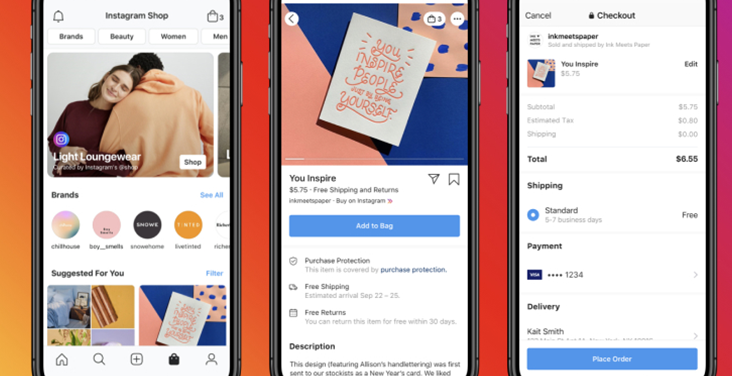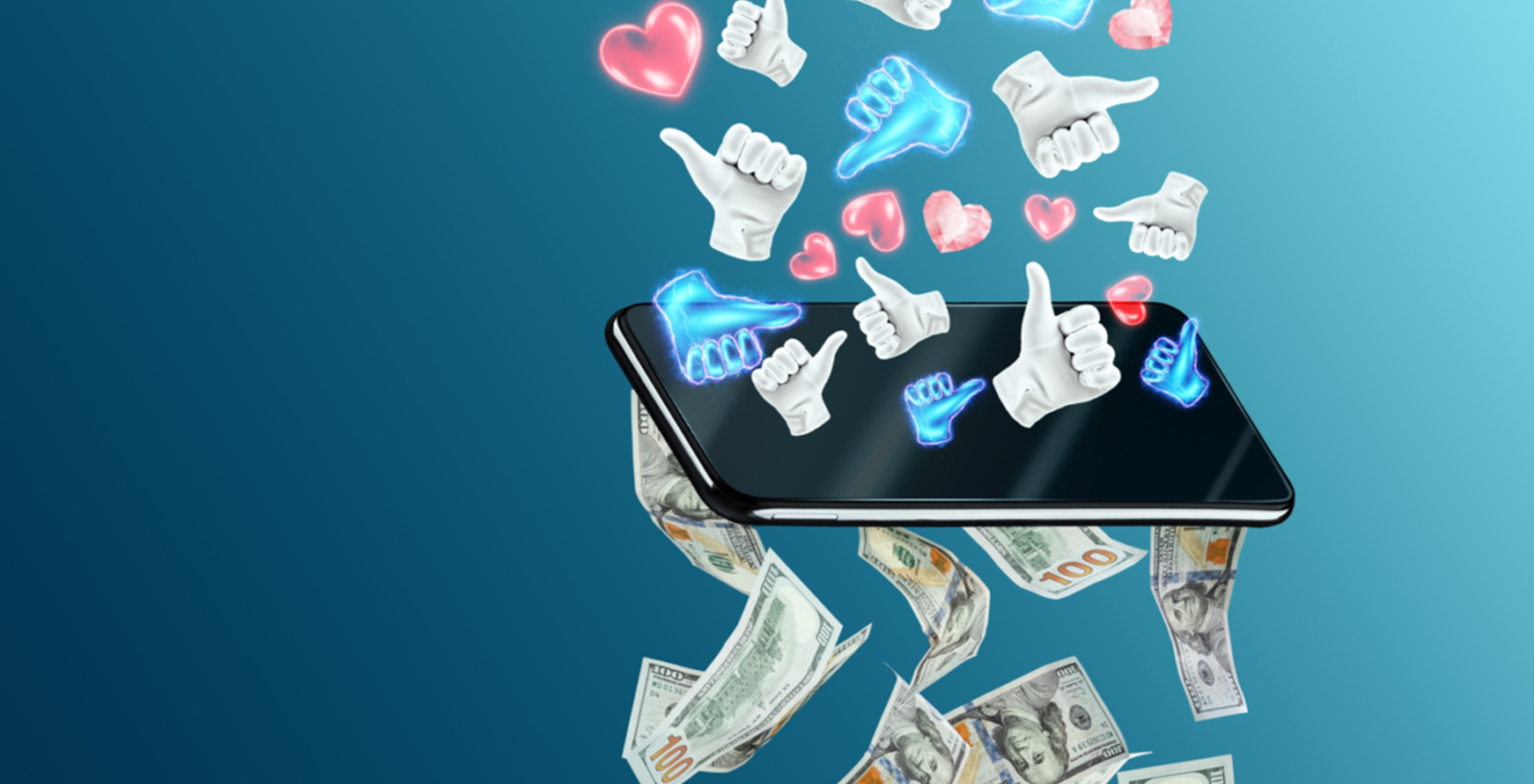Hello! We’re back with our look at the latest developments from our favourite platforms. This month, it’s a hattrick of updates – a new way of doing things on Insta shopping, new paid features across Meta and new opportunities for brands via YouTube’s new shorts Feature. So, let’s get into it…

Insta shopping is a-changing
The latest reports suggest Instagram will scale back some of its shopping features due to “shifts in company priorities” – namely, a move towards increased ad revenue.
Plans include the removal of the Shop tab in favour of a less personalised iteration nicknamed Tab Lite, which we’re hearing has entered public testing.
The notifications tab replaces the Shopping icon in the app’s lower navigation bar, but shopping features remain accessible from the secondary menu where settings and saved posts are located.
Parent company Meta is also cutting investment in creator commerce within Instagram shopping, and will retire the Friends and Family Shopping feature.
So how will all this affect brands and businesses? Well, Instagram isn’t abandoning its ecommerce efforts altogether, but revitalising its current offering to adapt to current market trends. It’ll continue to develop ways for customers to discover and shop through feed posts, Reels, Stories and live shopping events.
So-called Tab Lite represents a somewhat scaled-down version of the current Shop tab, which might mean less personalised shop recommendations. The result? A potential impact on your discoverability – but expect Instagram to ramp up its ad opportunities, which will serve your ads to niche audiences most likely to convert to customers.
If you need help navigating these changes, and making the most of new features and formats, get in touch – we can help.

New Meta features worth paying for
We’re hearing that Meta is looking into the possibility of adding new paid features to Facebook, Instagram and WhatsApp – though these wouldn’t be the first on those platforms.
WhatsApp is working on a paid tier for business users, while some Instagram creators can charge their followers subscription fees. The project to roll these out – dubbed New Monetisation Experiences – could result in new paid features being introduced in the next five years.
This marks a major step towards building a paywall into Meta’s main social apps. A paid tier would no doubt emulate the Twitter Blue or Snapchat+ model, tailored towards super users who pay for exclusive or in-development features – or the features most popularly requested by the community. Brands’ ads won’t be affected; there appear to be no plans to include an ad-free experience within a possible paid tier.
Facebook is testing a new feature that lets you release exclusive content. After Meta teased an upcoming exclusive content feature for creators last week, user Jonah Manzano spotted the feature in testing on Facebook. According to screenshots, the feature gives users the option to toggle on an ‘early access for subscribers’ feature when publishing a post from a profile. If enabled, you can customise the time window before the post becomes public, including 24 hours, 48 hours or longer.
This feature will allow brands to give subscribers meaningful content that will make them feel valued and part of a community. This could be sneak peeks, new product drops where demand is high, newsletters, videos, or articles.
Finally, Meta has unveiled a new ad type: Collaborative Ads, which lets local businesses and CPG brands increase product awareness while also directing consumers to order these products from a local delivery service using a call-to-action. Collaborative Ads for local delivery only shows products in stock with up to date pricing, so brands don’t need to worry about customers ordering an out-of-stock item.
Such ads establish a partnership between brands, retailers, grocers, local restaurants and delivery providers that helps create targeted local interest on Facebook and Instagram.
Brands can use these ads to optimise and measure conversions. For example, a restaurant brand can create a campaign aimed at reaching consumers who have shown previous interest in their products on a food delivery app.

A Shorts story with a happy ending
Reports have revealed new information about Shorts ads – which we reported as being in testing with select campaign types in April. Creators could receive 45% of ad revenue, a slightly smaller cut than the standard 55% for pre- and mid-roll long-form video ads.
Why would brands use Shorts ads? Well, they’re a great way to enable gradual monetisation, a good starting place for creators to start out monetising Shorts before moving into the more lucrative long-form video space.
Capturing attention is essential, so utilise thumb-stopping creative and include key information at the beginning of the ad.
YouTube will also reportedly lower the barrier for entry to the YouTube Partner Program, allowing creators with less than 1,000 subscribers to make money from ads. Currently creators need 4,000 total public watch hours in a 12-month period to qualify for monetisation.
That’s it from us for now, but we’ll be back next month to look back at the most eye-catching developments in October.